Retour d’expédition
Galerie Provost-Hacker
solo show – 2021 – Lille

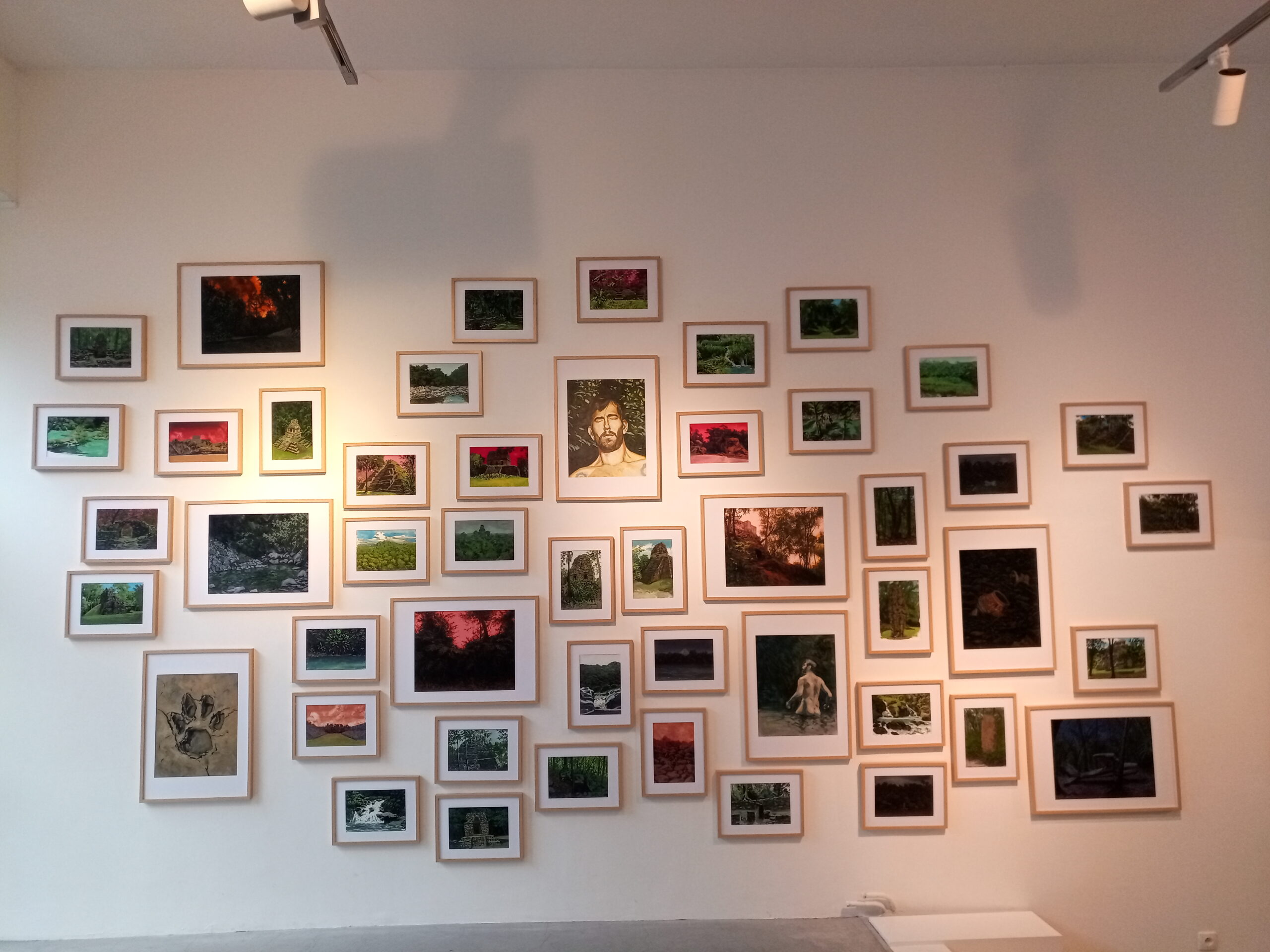
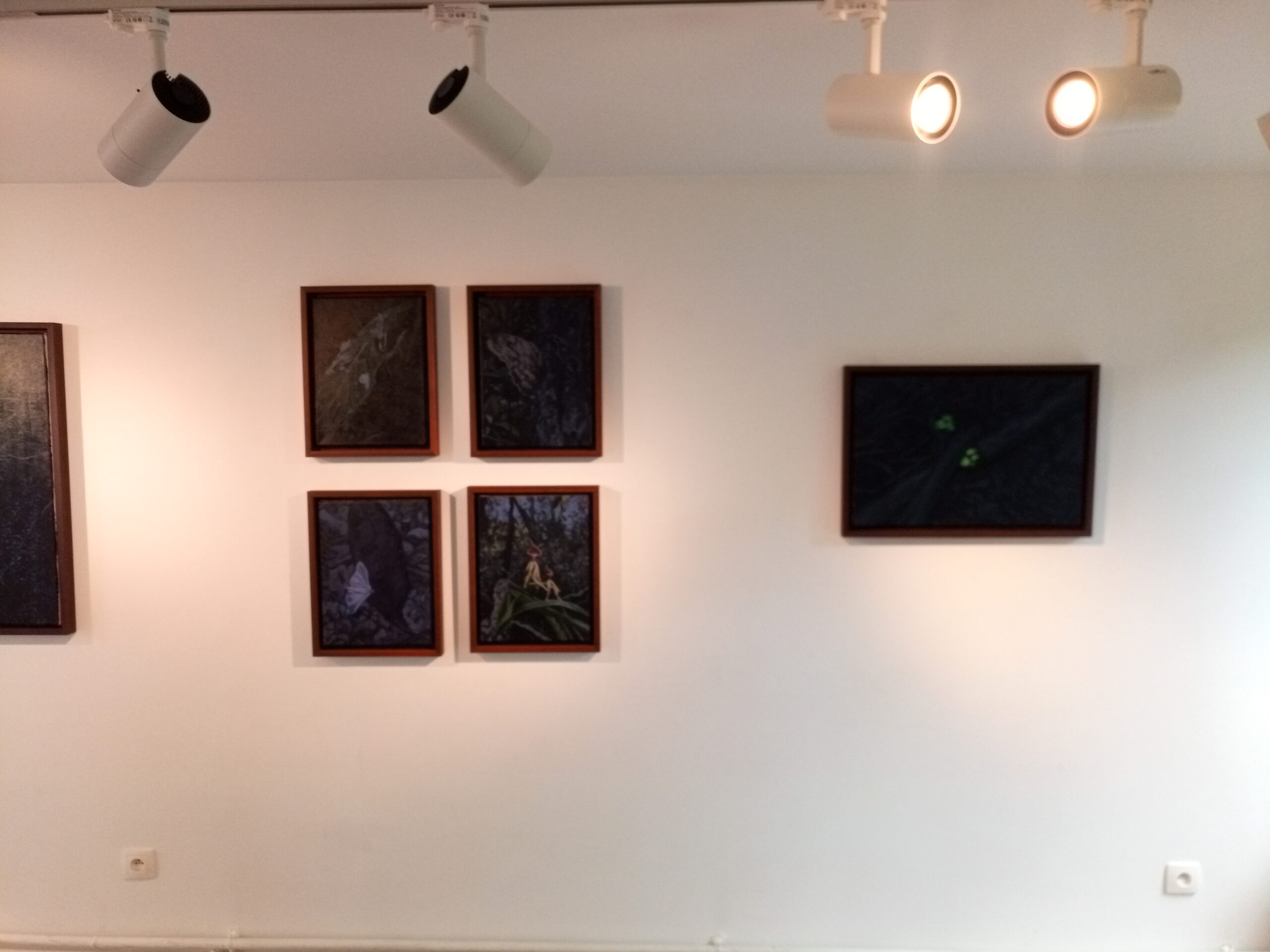

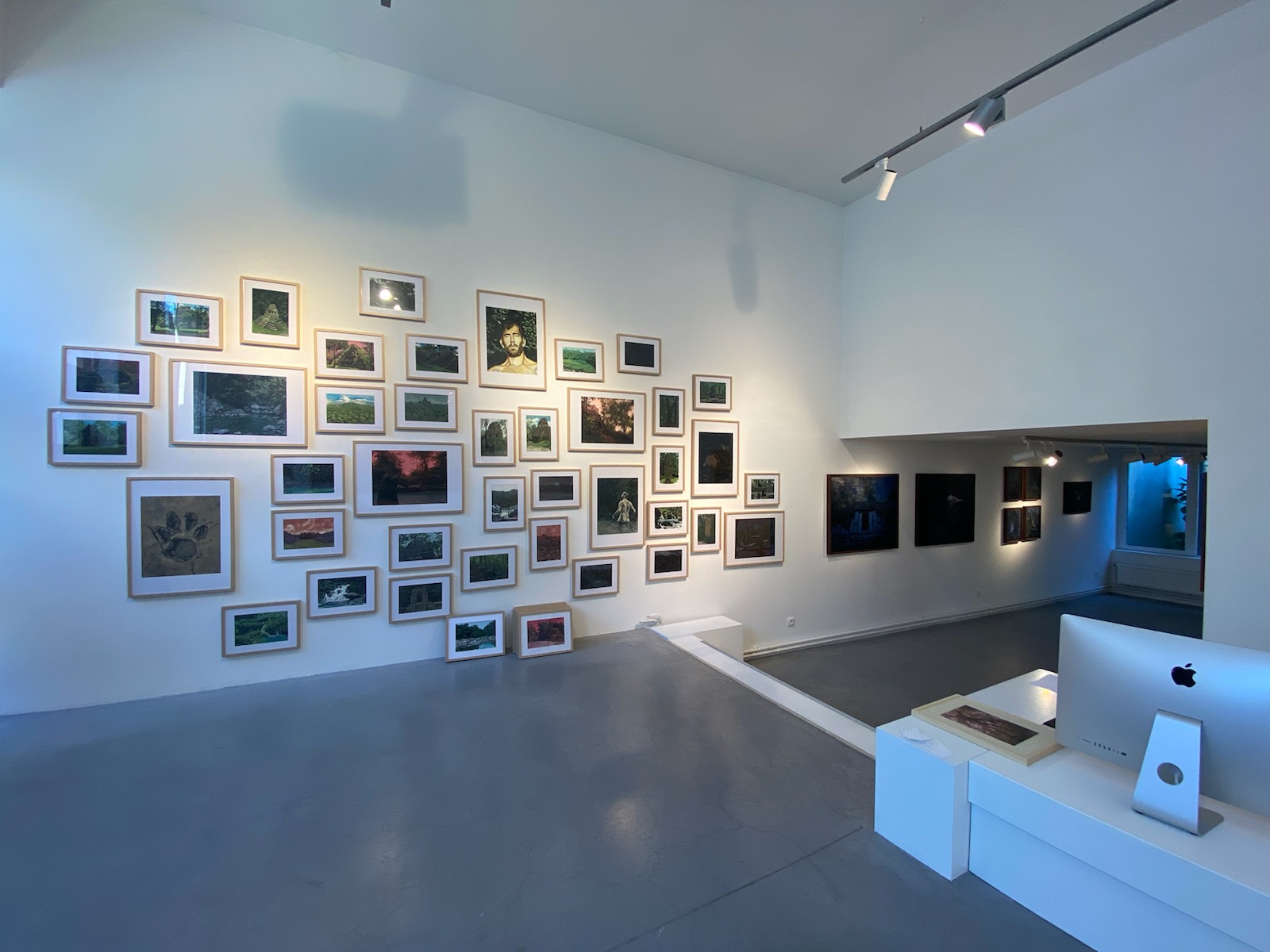

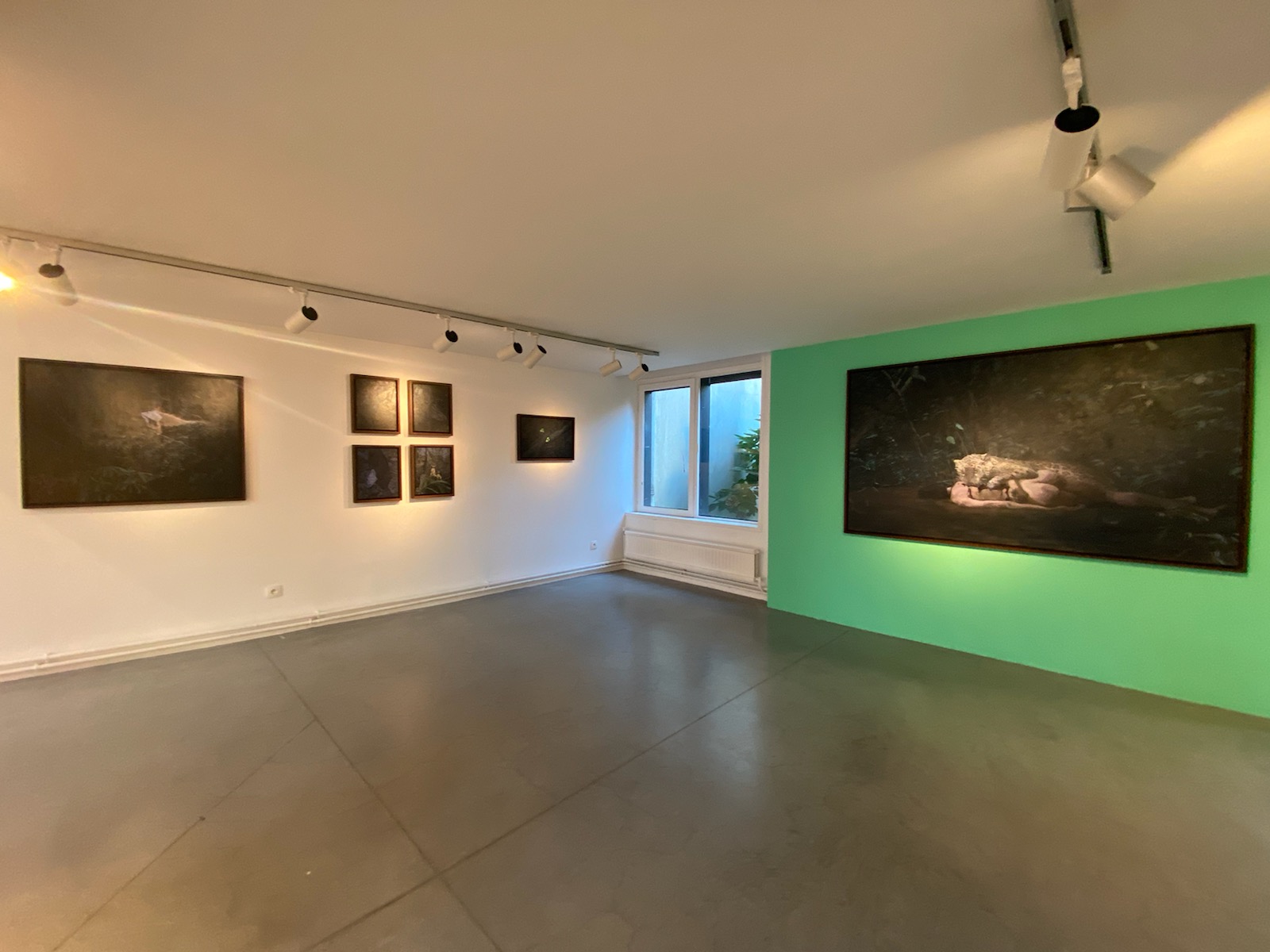
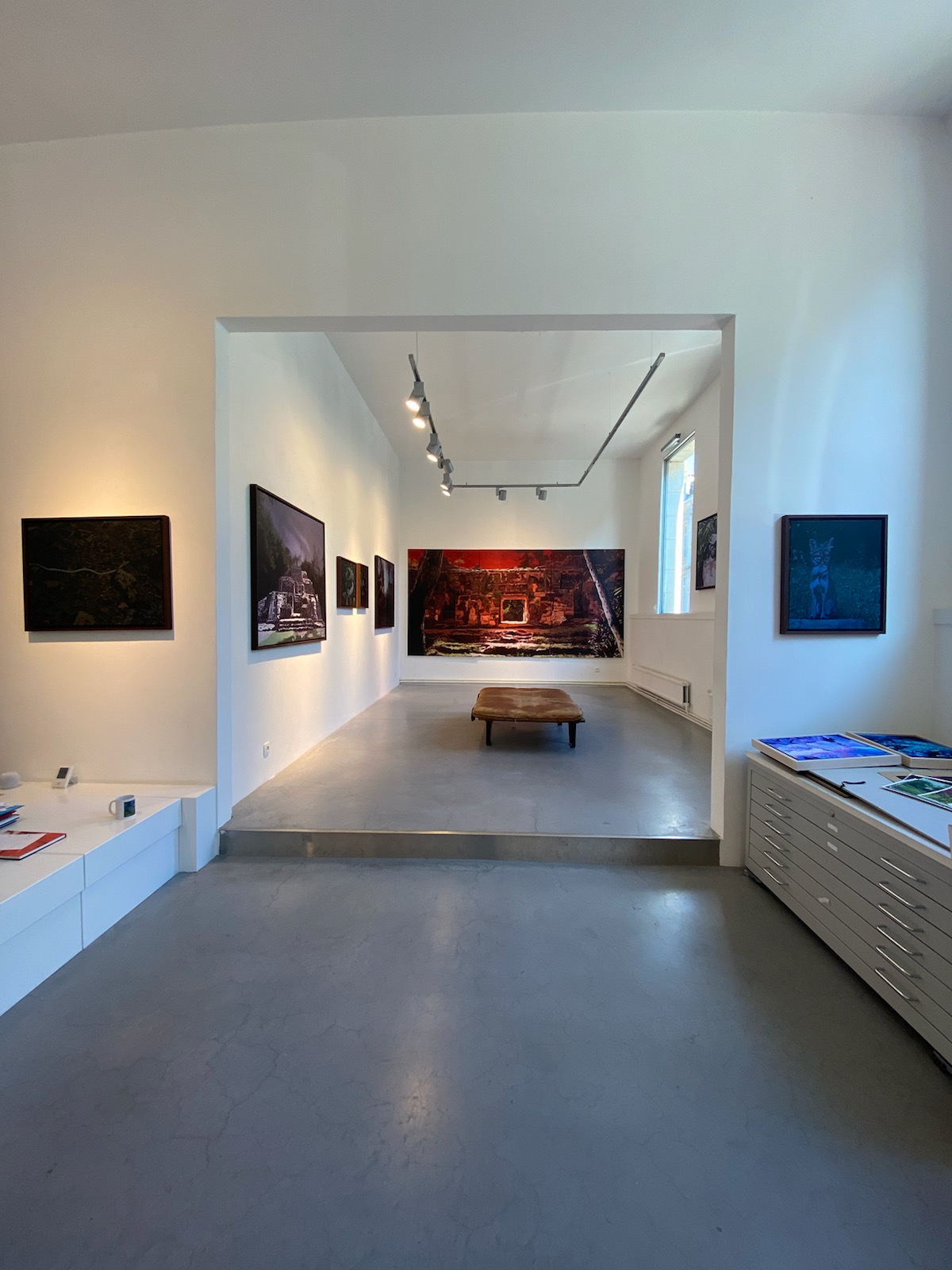
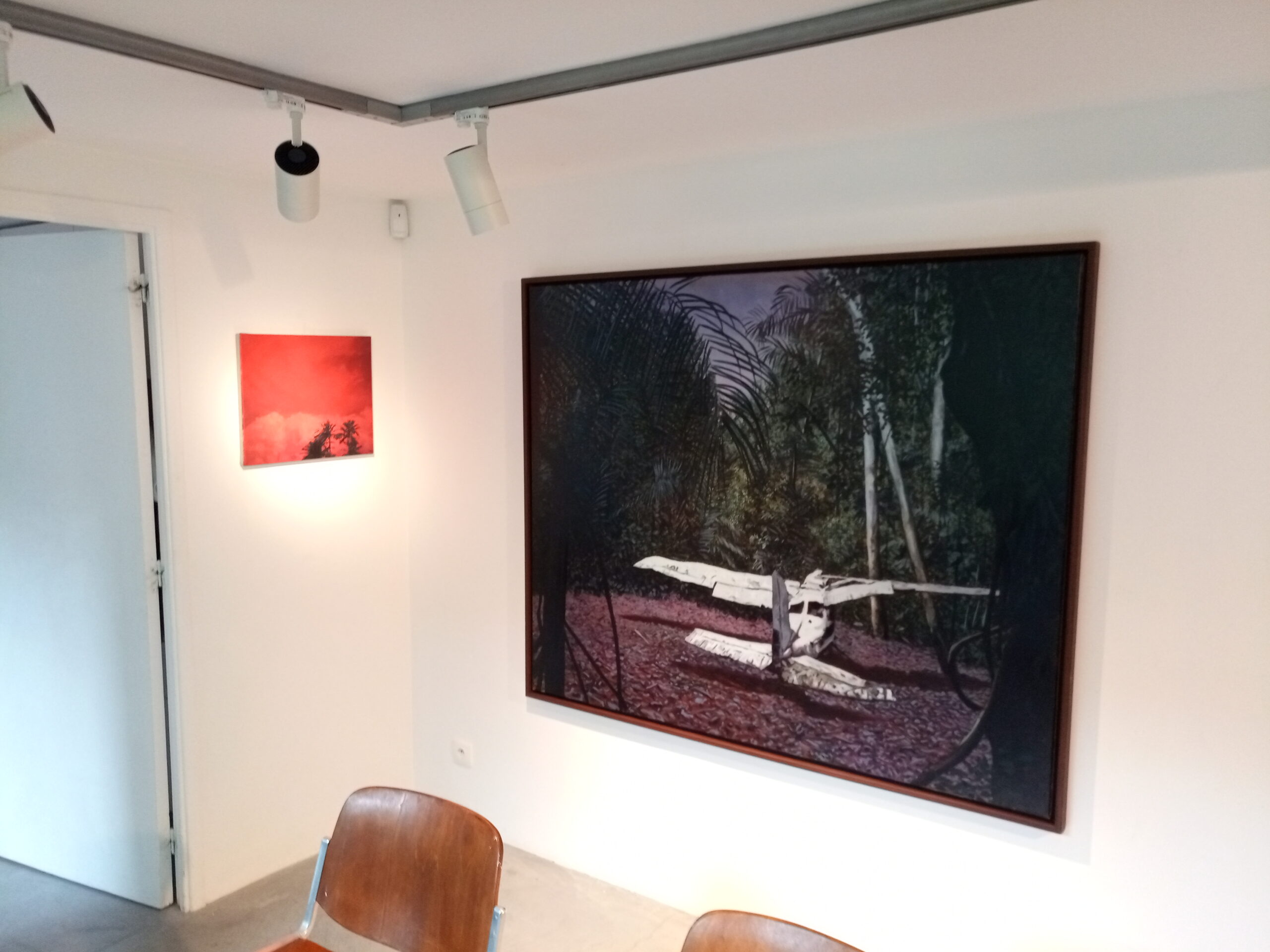
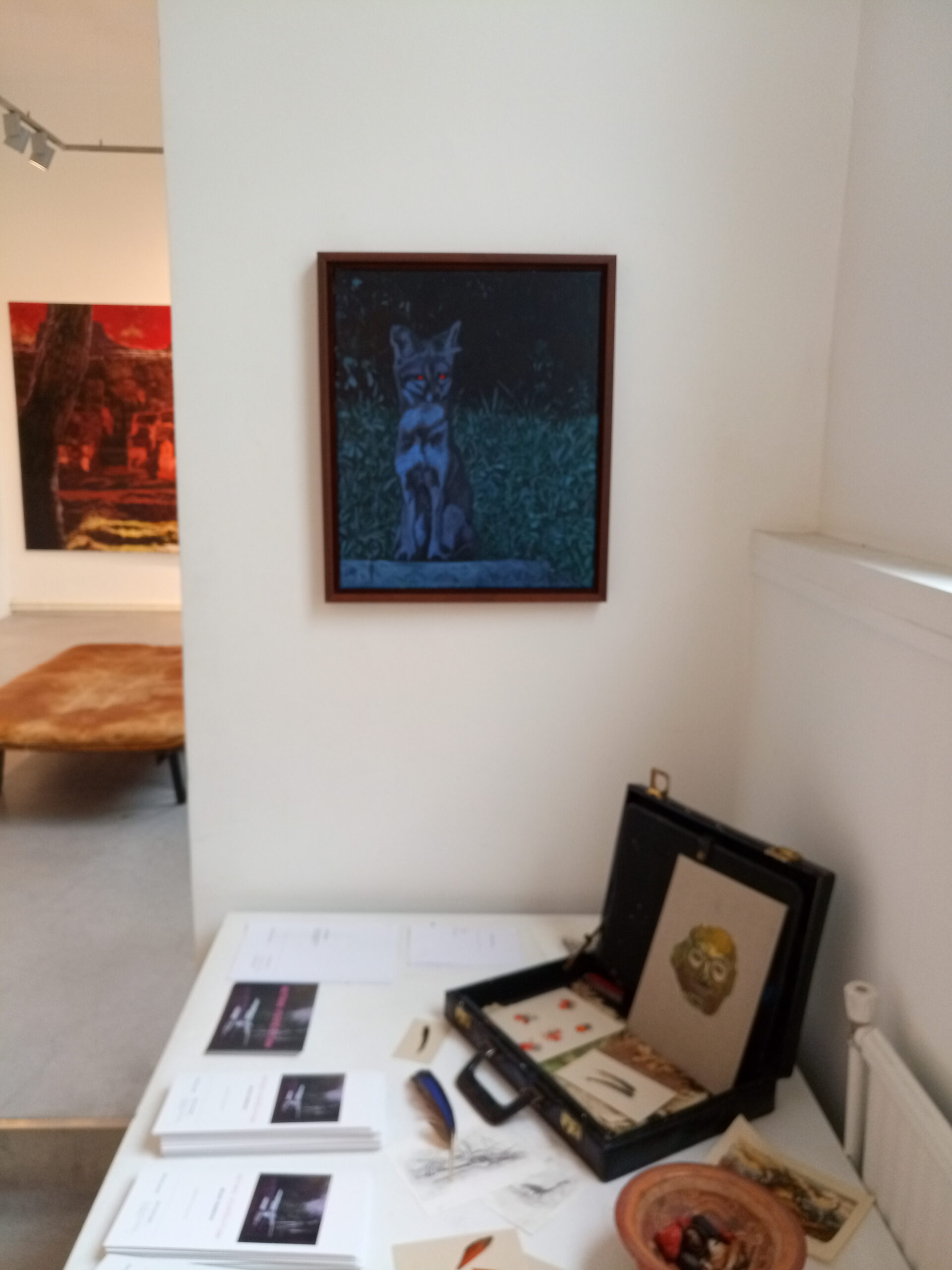


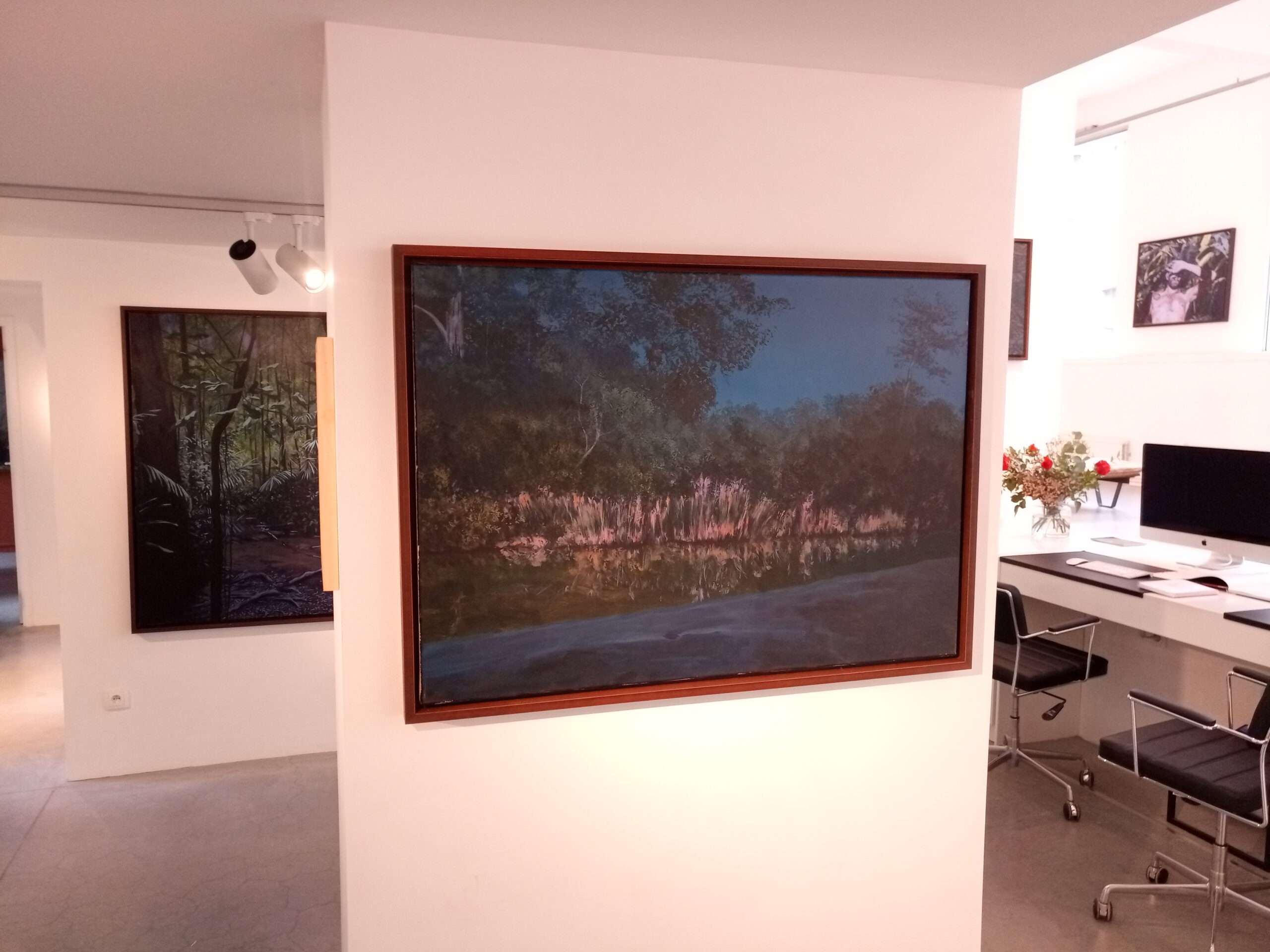
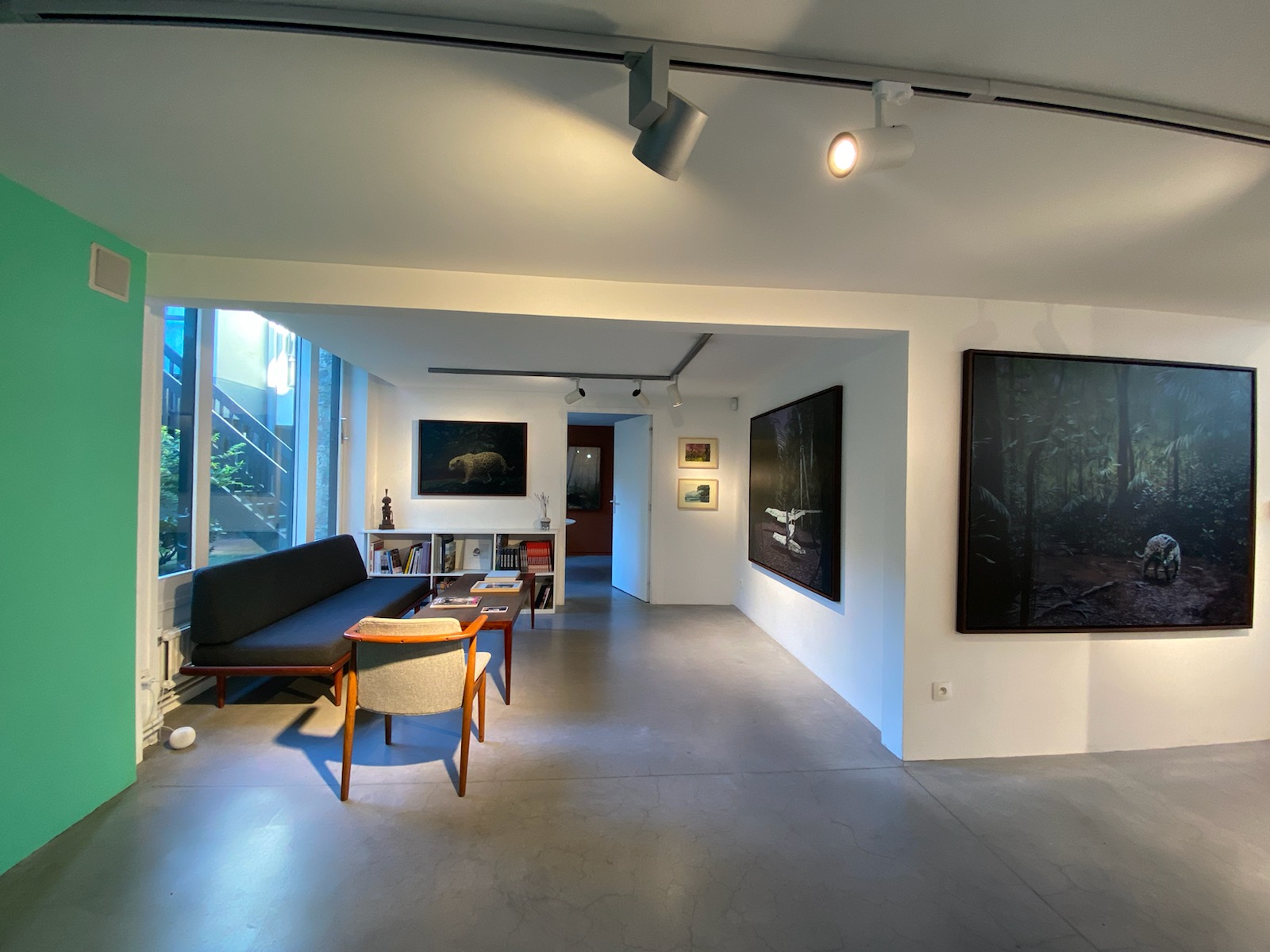
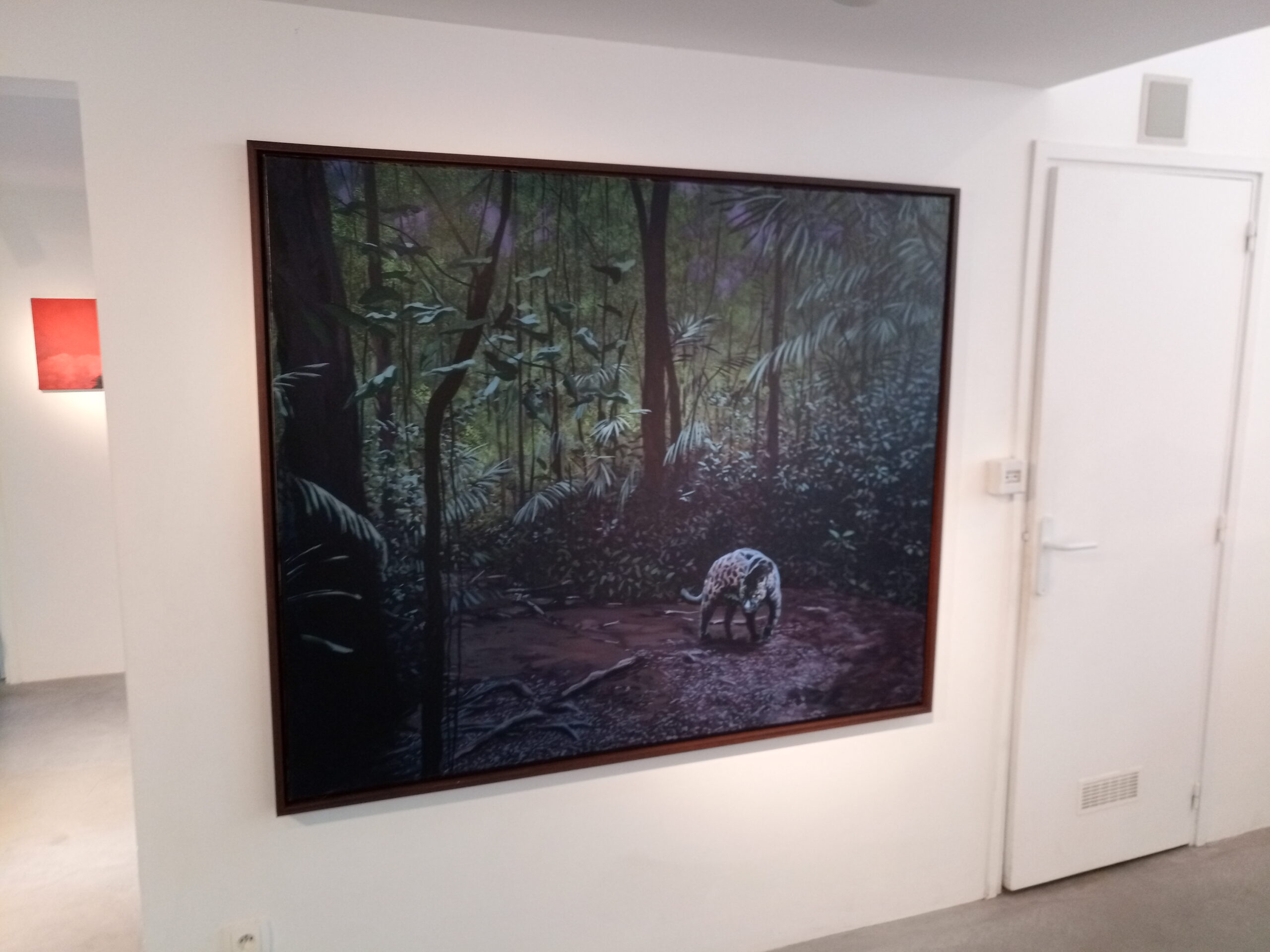

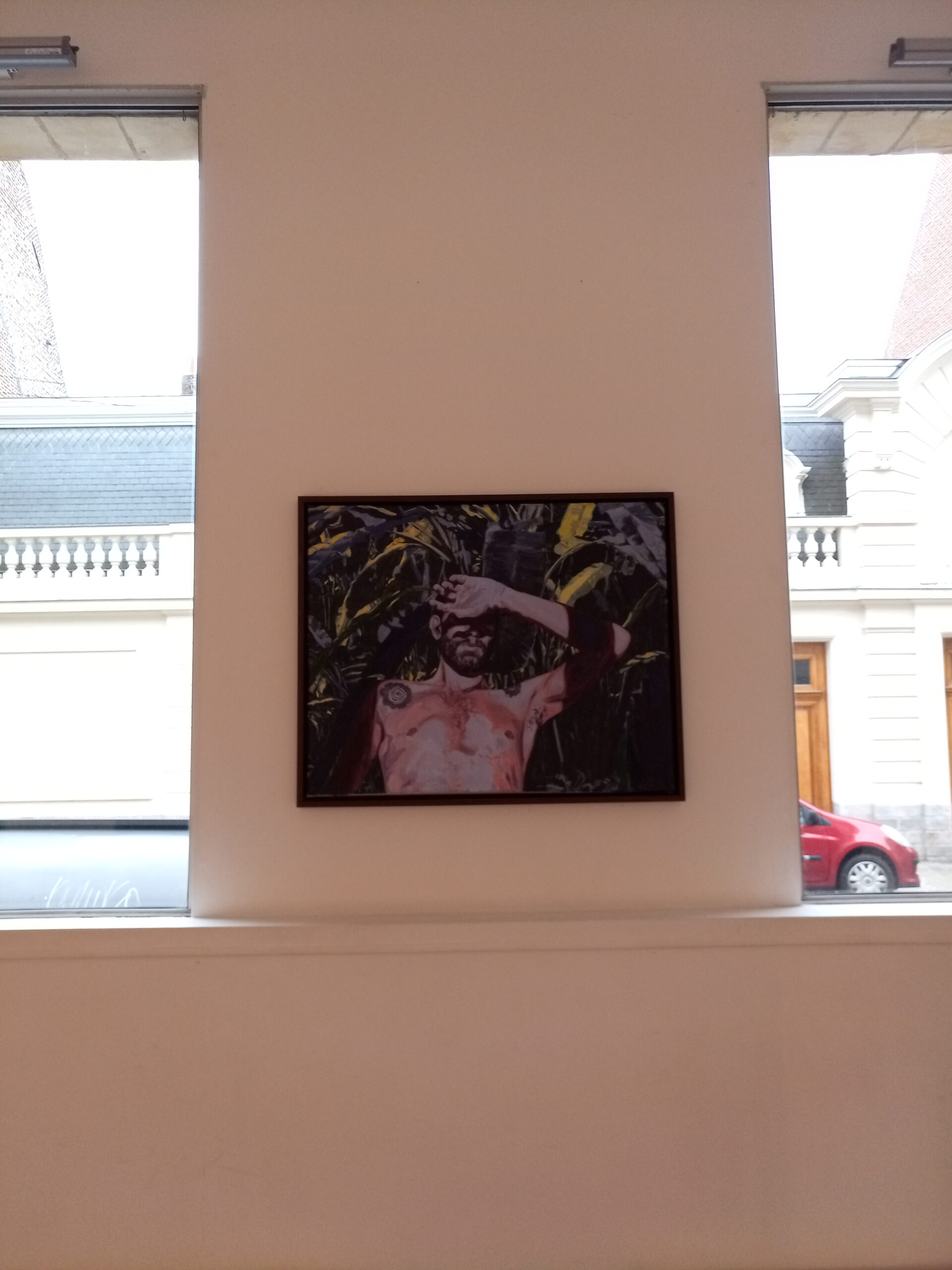
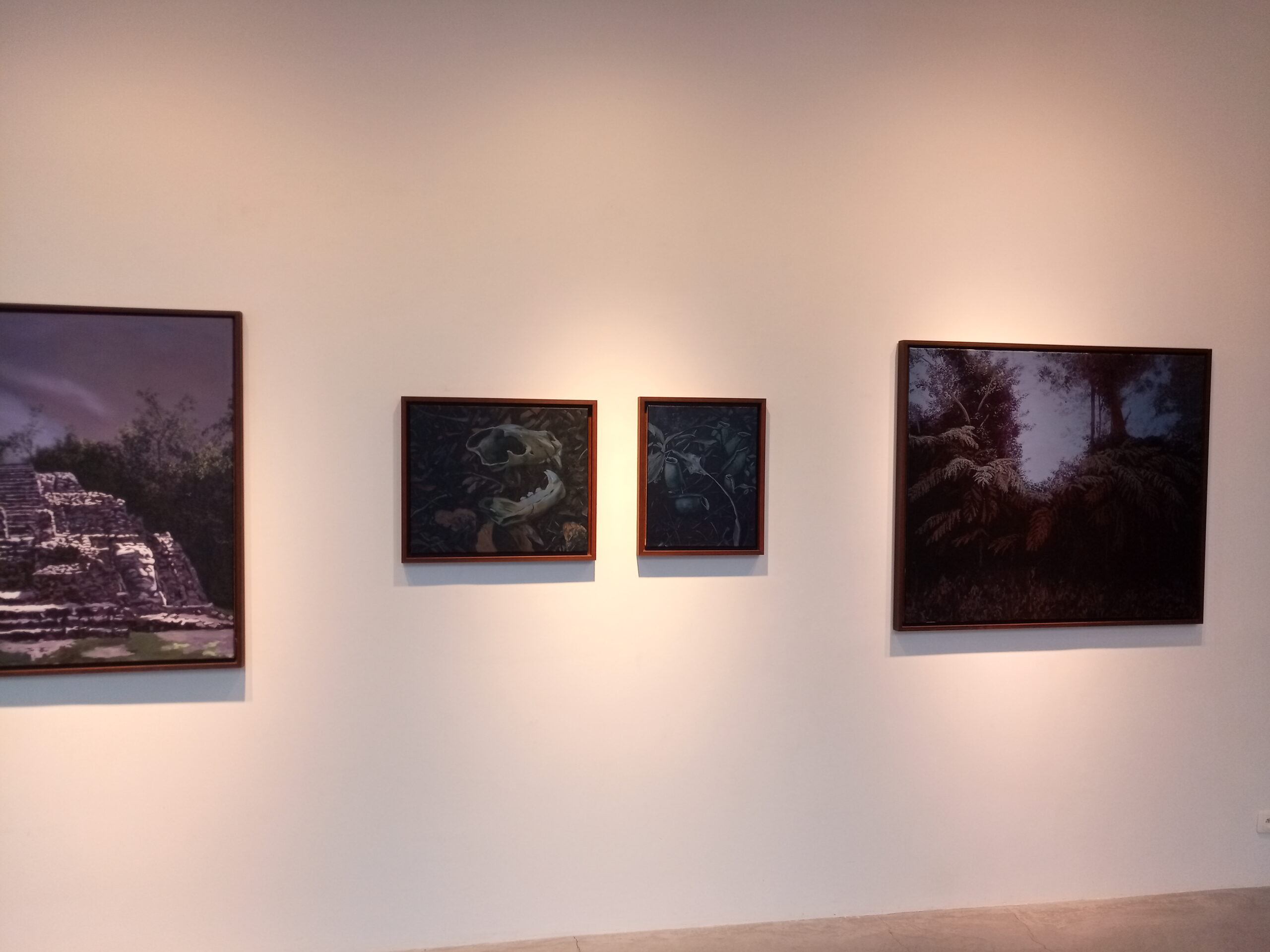


Galerie Provost-Hacker presents Bruno Gadenne
“Return from the Expedition”
Parisian artist Bruno Gadenne went in search of the ancient Maya and returned with
an artistic narrative told in one hundred paintings. These and Gadenne’s new
largescale works based on his experiences in the jungle will be exhibited in a solo
show in Lille.
Le point d’eau, 2021, oil on canvas 100 x 120 cm
© Bruno Gadenne © Galerie Provost-Hacker
By Alexia Green
March 2021
“The real voyage of discovery consists not in seeking new landscapes
but in having new eyes”.
– Marcel Proust
Driven by an anthropological curiosity to broaden the horizon and see what is to be
seen, many a thinker, writer and painter has sought new adventures in foreign lands.
Motivated by his own inquiring mind, the artist Bruno Gadenne spent three months
over the winter of 2019 and 2020 travelling through Central America to find the ancient
cities of the Maya. He recorded his journey in one hundred gouache paintings; the
resulting ensemble presents a pictorial Mesoamerican tale.
“The idea behind my trip was to follow in the footsteps of the 19th century American
diplomat and explorer John Lloyd Stephens and Frederick Catherwood, the British
illustrator and architect who together rediscovered many of the ancient Maya cities
deep in the jungle. I wanted to see those places for myself and paint what I saw”.
Though Gadenne has travelled extensively since childhood (he speaks several
languages including some Indonesian), he is not, he says, an intrepid explorer in
search of uncharted territories. Where Stephens and Catherwood sailed out of New
York Harbor aboard a British brig, the Mary Ann in October 1839, Gadenne caught a
flight from Paris-Charles de Gaulle to San Pedro Sula in Honduras.
“I flew via New York and Atlanta so, indirectly, my path crossed where theirs had
begun nearly two hundred years before”.
Insert image 2
Les cimes d’en face (var. rose), 2020, gouache on paper 22,8 x 30,5 cm
© Bruno Gadenne © Galerie Provost-Hacker
Over seventy of the original one hundred paintings made during the expedition are
being unveiled in Gadenne’s upcoming show. It is the first solo presentation for the
artist with the Lille-based gallery founded by Emmanuel Provost and François Hacker
which supports local young talent as well as international emerging artists.
Creating an imposing bank along one of the gallery’s walls, the pieces painted in-situ
will be exhibited with some larger oils on canvas that Gadenne developed upon his
return.
“The show is a visual narrative recounting forest myths based on my own experiences
living in the jungle” he declares.
The motmot calls
Born in Cavaillon in Provence, Gadenne studied at the Haute école des arts du Rhin
(HEAR) in Strasbourg. After graduating, he joined a gallery in the city. Since 2018, he
has also been represented by the Galerie du Jour, part of the contemporary art
foundation set up by French designer Agnès B. Exhibitions have included two solo
and several group shows. Yet his career, he says, could have quite easily taken a
different path.
“I was raised in a scientific family. My father was a scientist studying pheromones in
insects. I worked with him for a couple of summers doing brain scans of butterflies,
that kind of thing. I was fascinated. My mother was a maths teacher but she did a lot
of painting and I think these two spheres collided within my own character”.
With only the bare essentials, Gadenne slept in a tent suspended above the jungle
floor. Sequestered amongst the flora and fauna in his arboreal cocoon, he felt both
concealed and conspicuous.
“You have a sense of being watched all the time, by the birds, the monkeys, all the
animals. But you also become the one who is watching”.
These sentiments are emulated in some of the dusk paintings he made. A couple
entitled Noctambule I and II portray close-ups of a moth in inky blue shades. The
existence of the creature as the subject contradicts the truth about who the night owl
is here.
Often alone, thoughts, says Gadenne turn to living in the moment.
“The beauty in being there in solitude is the ability to not overthink. Instead, basic
survival needs kick in… where to find food or where to hide my backpack safely so
that when I return it is still there!”
What he overwhelmingly felt was liberated. “People often expect that you feel
loneliness, or apprehension. Actually, the feeling is one of freedom” he proclaims. “I
was camping next to ancient Maya temples. It wasn’t the jungle that I was afraid of, it
was being found!”
In the company of tropical motmot birds and butterflies, Gadenne set off for long
periods to paint, leaving a trail of twigs to mark the return path.
“I would walk for a long time trying to find the best spot to draw. I was continually
preoccupied with what to paint and when to paint it. Butterflies would land on my paper,
attracted to the colour, but I didn’t always make the best choice either. I had to stop
one day because the ants were everywhere”.
Insert image 3
Le temple des masques, 2020, oil on canvas 110 x 140 cm
© Bruno Gadenne © Galerie Provost-Hacker
Painting atop pyramids
The artist visited twenty-three sites throughout Honduras, Mexico (Chiapas) and
Belize, as well as the UNESCO Maya Biosphere Reserve in Petén in northern
Guatemala.
“Just as Stephens and Catherwood had done, the first site I saw was Copán in western
Honduras. It was everything I had imagined it would be. It’s known for the stelae which
are sculpted stone monuments carved in limestone and were built to honour the King”.
Did he feel a spiritual nostalgia while he was there? “No” he smiles, “It was a very
fulfilling moment but I am pragmatic by nature. Of course, I respect the ancestral
heritage and appreciate that these are the remains of a powerful, innovative people
who believed in rituals and deities. But I see these places for what they are, in the here
and now, as stone ruins, rocks and forests”. Gadenne’s candour is refreshing.
What is astonishing, he admits, is the sheer vastness of the civilisation. To reach the
pre-Columbian settlement of El Mirador is a three-day trek. “Some of the ruins are so
deep into the jungle that I had to go with a guide. It was thrilling to listen to the stories
of war and sacrifice from a local ”.
As past and modern-day explorers have learnt, nature reclaimed the terrain and
Gadenne’s landscapes are dominated by lush vegetation. Yet, hidden underneath the
verdancy lies a megalopolis stretching for miles and miles, much of which remains
undiscovered.
“I painted a view of the jungle from the top of La Danta, one of the largest pyramids at
El Mirador. There were trees as far as the eye could see. The only signs of former
inhabitants were the architectural mounds dotted across the flat landscape. I could
count around fifty in that one view”.
Insert image 4
Le bananier, 2020, gouache on paper 30,5 x 22,8 cm
© Bruno Gadenne © Galerie Provost-Hacker
Glimpses of Maya artistry, architecture and cultural belief systems are interspersed
amongst the forested paintings; remains from Tikal, Palenque, El Mirador, Yaxhá and
La Muerta emerge amongst banana trees, pines, lowland forest and savannas. Other
compositions with caves and rocky terrain expose ancient ritual sites created from
limestone sink holes belonging to the underworld of the deities.
Along the way, Gadenne travelled by kayak and some of the works depict blue-green
lakes and lagoons, rivers and remnant mangrove forests. “I painted with water from
rivers or streams and the ocean so a physical element of this ancient landscape is
really integrated into the art”.
Insert image 5
Présage rouge, 2020, oil on canvas, 40 x 50 cm
© Bruno Gadenne © Galerie Provost-Hacker
To Paris and a new skyline
Currently working out of a studio in Clichy in the northwest of Paris, Gadenne is part
of Poush Manifesto, a one hundred and seventy strong artists’ community currently
occupying several floors in a 1970s high-rise of former office space. The sixteen-story
block dominates the capital’s infamous périferique.
“It’s a great location. In the jungle I would climb temple steps and look out over a sea
of green. Back here, I take the lift to the 12th floor and see the city. I’m immersed in
an urban jungle!”
Gadenne talks about painting with a quiet determination and one senses how it
consumes his life. To watch him paint is like a story unfolding. Using an allover
technique and immersed in the painterly space, his actions reinforce the creative
rhythm to which he defines his own existence.
“When I paint, I paint quickly” he says. “It takes a lot of energy, especially when I’m
working on large canvases. Painting can be exhausting!”.
With deft, energetic movements, his brush strokes lend an immediacy to the
compositions which, he says, are “impressions of a moment and deceptively simple”.
Such modesty belies the talent of this Frenchman. Film is a big hobby and a source of
reference for his work. “I have watched hundreds of movies and I write a review for
each one. The notes serve as great preparation for new pieces”. As the layers of paint
build up, Gadenne limns the landscape like cinematic stills.
He also takes countless photographs. On this trip alone, he counted seven thousand.
“When I’m planning a painting, I’ll take multiple shots of the same view which I develop
back in the studio. There is also a digital element to my work. My main interest is to
create the right atmosphere within a painting so I use photoshop like a sketchbook to
try out the focal features of a montage, for example the crop, the light or colour. It’s an
efficient way to see what works”.
Insert image 6
L’orchidée, 2020, oil on canvas, 40 x 30 cm
© Bruno Gadenne © Galerie Provost-Hacker
Eternal echoes of an ancestral kingdom
Motifs from the plant and animal realm appear throughout Gadenne’s body of work
like ancient totems. Jaguar, grey fox, iguana and silent, slithering vine snake all
breathe their presence amongst nocturnal landscapes or light-dappled chorographies.
Bioluminescent ghost fungi steal the twilight with their eerie glow. Indeed, it is hard to
tell the time of day or night, something Gadenne attributes to his use of the nuit
américane or day for night filter.
“The jungle is always covered with foliage and dim like an underexposed photograph
so it can be difficult to determine the time of day. The old Hollywood movies simulated
night scenes during daylight filming which rendered a strange, unreal atmosphere. I
often do this with my paintings. It takes the notion of time out of the equation”.
Insert image 7
Le festin, 2021, oil on canvas, 120 x 200 cm
© Bruno Gadenne © Galerie Provost-Hacker
Capturing the blurred moments between the last rays of sun and nightfall, Gadenne’s
imagination slips into that pre-slumber state of consciousness when nightmarish
scenarios beckon. L’insomnie, Le piège (the Trap), Présage rouge (Red Omen) and
Le veilleur (The Watchman) all hint at Gadenne’s oneiric preoccupations.
The Feast goes further and naturally draws parallels with his French forebear
Rousseau. The post-impressionist painter didn’t ever leave his home country, but his
1905 masterpiece of a lion attacking an antelope intimates an exotic savagery.
Borrowed by Gadenne, it re-emerges like the stuff of bad dreams as The Hungry
Jaguar Throwing Itself on the Artist.
Gadenne more closely cites the tropical landscapes of Nicaraguan painter Armando
Morales and the Russian 19th century painter Ivan Shishkin whose poetic
compositions of wild nature, animals and birds hold a deep resonance within his own
repertoire.
A cultural treasure trove
The largest work in the show is a triptych entitled Le Portail (The Gate). At nearly 2m
by 4m, it took around two months to complete and is the “the jewel at the end of the
journey”. Doused in sanguine light, a stone portal on its central panel beckons the
traveller to traverse its fortress-like threshold like a revenant invitation to the past. It is
a blazing homage to the dormant cultural wealth of a lost civilisation.
Yielding a bountiful collection of art just as a scientist hails newly discovered species,
Gadenne’s captured scenes, moments, nuances and light bear witness to both
indigenous wonders and contemporary self-exploration.
Bruno Gadenne Return from the Expedition at Galerie Provost Hacker, Lille, from 14
May to 19 June 2021
For further information go to www.galerie-provost-hacker.com and
www.brunogadenne.com
Insert image 8
Biotopoe du lamantin, 2020, gouache on paper 22,8 x 30,5 cm
© Bruno Gadenne © Galerie Provost-Hacker
Insert image 9 & 10
Photo © Bruno Gadenne 2020
Photo © Bruno Gadenne 2020